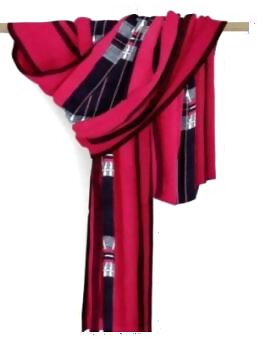
views
Prime Minister Narendra Modi on Saturday met German Chancellor Olaf Scholz in New Delhi. The Prime Minister gifted Meghalaya Stole and Nagaland Shawl to Scholz, who is on a two-day visit to India.
PM Modi said security and defense cooperation can become an important pillar of India-Germany strategic partnership.
India has been pressing for resolving the Ukraine “dispute” through dialogue and diplomacy and is ready to contribute to any peace process, PM Modi said after holding talks with visiting German Chancellor Olaf Scholz, who favoured a “clear stand” in the UN on the issue.
The German Chancellor described the Russian “aggression” against Ukraine as a “major catastrophe” that has negatively impacted the globe and said it is important to state “very clearly where we stand on this subject” including at the UN as international law governs international relations.

Meghalaya Stole – Origin
With a rich history and a royal lineage that dates back centuries, Meghalaya stoles were originally woven for the Khasi and Jaintia royalty, who considered them a symbol of their power and status. Since then the weaving of Meghalaya stoles has been passed down through generations.

The designs used in Meghalaya stoles were highly symbolic and held great significance in the tribe’s culture and tradition. For instance, the use of animal motifs such as tigers and elephants was a symbol of power and strength, while the use of floral patterns was a symbol of beauty and grace. The designs used in the stoles reflected the royal family’s beliefs, myths, and legends, and were a testament to their cultural heritage.
The stoles are made using locally sourced wool, and natural dyes.
Meghalaya Stole – Significance
Meghalaya stoles were used as a form of diplomatic gift-giving. The Khasi and Jaintia kings would often present these stoles to other rulers as a symbol of goodwill and respect. Given their value and importance, the stoles were also given as gifts to visiting dignitaries and guests.
Renowned for their warmth and softness, Meghalaya stoles are not just a functional piece of clothing but their weaving is an art form that required great skill and creativity. The weavers, mostly women, spend hours weaving intricate designs and patterns using traditional weaving techniques.
Nagaland Shawl
An exquisite form of textile art that has been woven for centuries by the tribes in Nagaland, these shawls are known for their vibrant colors, intricate designs, and the use of traditional weaving techniques, which have been passed down from generation to generation.

The Naga shawl is not just a piece of clothing; it is a symbol of the rich cultural heritage of the Nagas. Each shawl tells a unique story, reflecting the tribe’s history, beliefs, and way of life. It is said that the Nagas believe that a shawl is not just a piece of cloth, but a living entity that has a soul and spirit.
Nagaland Shawl – How it is made?
The Naga shawl is made from locally sourced materials such as cotton, silk, and wool. The traditional weaving techniques involve the use of backstrap looms, where the weaver sits on the ground and wraps the loom around her body. This technique allows the weaver to create intricate designs by using different colors and patterns. The weavers often work in groups, and the entire community participates in the weaving process.
One of the most striking features of the Naga shawl is the use of geometric and symbolic designs. The designs are inspired by the tribe’s myths, legends, and beliefs, with designs having specific meanings and significance.
Nagaland Shawl – Significance
The colors used in the Naga shawls are also symbolic. The Nagas believe that colors have a profound impact on their lives and well-being. Red, for instance, symbolizes courage, while black represents mourning. White is associated with purity, and green is a symbol of growth and prosperity. The weavers often use natural dyes made from plants and roots to create these vibrant colors.
In addition to their aesthetic appeal, Naga shawls also have practical uses. The shawls are often worn during festivals, ceremonies, and other special occasions as symbols of rank and lineage. They are also used as blankets,
seat coverings, and even as bags. The shawls are known for their durability and can last for several generations.
The Naga shawl is a testament to the rich cultural heritage of the Nagas. It is a symbol of their history, beliefs, and way of life.
Read all the Latest India News here


















Comments
0 comment